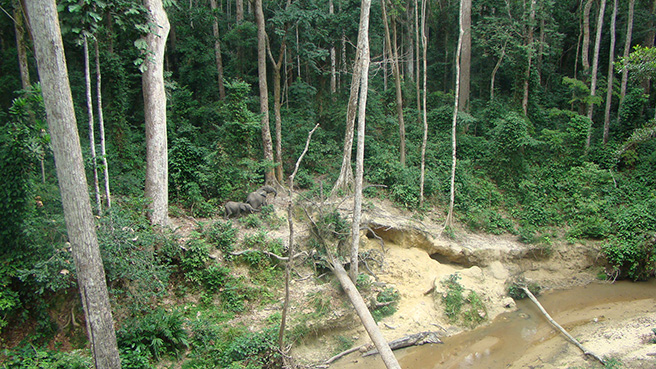Elephants are the largest land animals, so it comes as a great surprise that for one species, we really don’t know that much. How can an animal so large be studied so little? Despite their size, African forest elephants are actually very difficult to see.
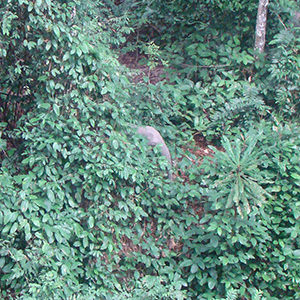
As their name suggests, African forest elephants live in the forests of Central and West Africa, and can be easily hidden by vegetation (see photos for proof!). You can spend a whole day walking through the forest and never see them (although they probably see you). The canopy of forest trees also prevents viewing from overhead, making aerial surveys ineffective. Their dense habitat, large ranges, and overall difficult access for humans in the forest make it very difficult to study this species, and are the reasons why we know so little about their basic biology.
Despite these difficulties, there is one way to see this species and much of our knowledge about forest elephants comes from these types of observations. Within the forest, there are places called bais, a word from the Mbuti pygmy people, which describes a natural clearing in the forest with large deposits of minerals. Similar to a natural salt lick, the minerals attract all types of wildlife for consumption. The clearings are created and maintained by the heavy foot traffic from animals such as gorillas, sitatunga, and bongo in addition to elephants.
Some bais, such as Dzanga Bai in the Central African Republic and Langoue Bai in Gabon are very large and attracted tens, and in Dzanga’s case, hundreds of elephants at a single time. Researchers have set up viewing platforms to observe elephants safely as they come into the bai and forage for minerals.
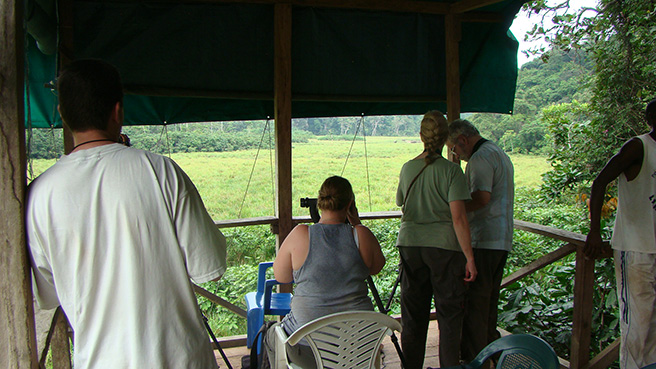
For my research in Lopé National Park, Gabon, I initially set up a platform at a saline, which is similar to a bai, but runs along a water bed. Although I saw some elephants, I quickly realized that the best place to see forest elephants was in the savanna clearings in the northeastern part of the park. Although Lopé is deep within the forest zone, there are patches of savannas, which are remnant from the Pleistocene Epoch and have been maintained by humans for thousands of years through prescribed burns. These savannas attract elephants as they forage for savanna fruits and grass, which is especially palatable after the burns.
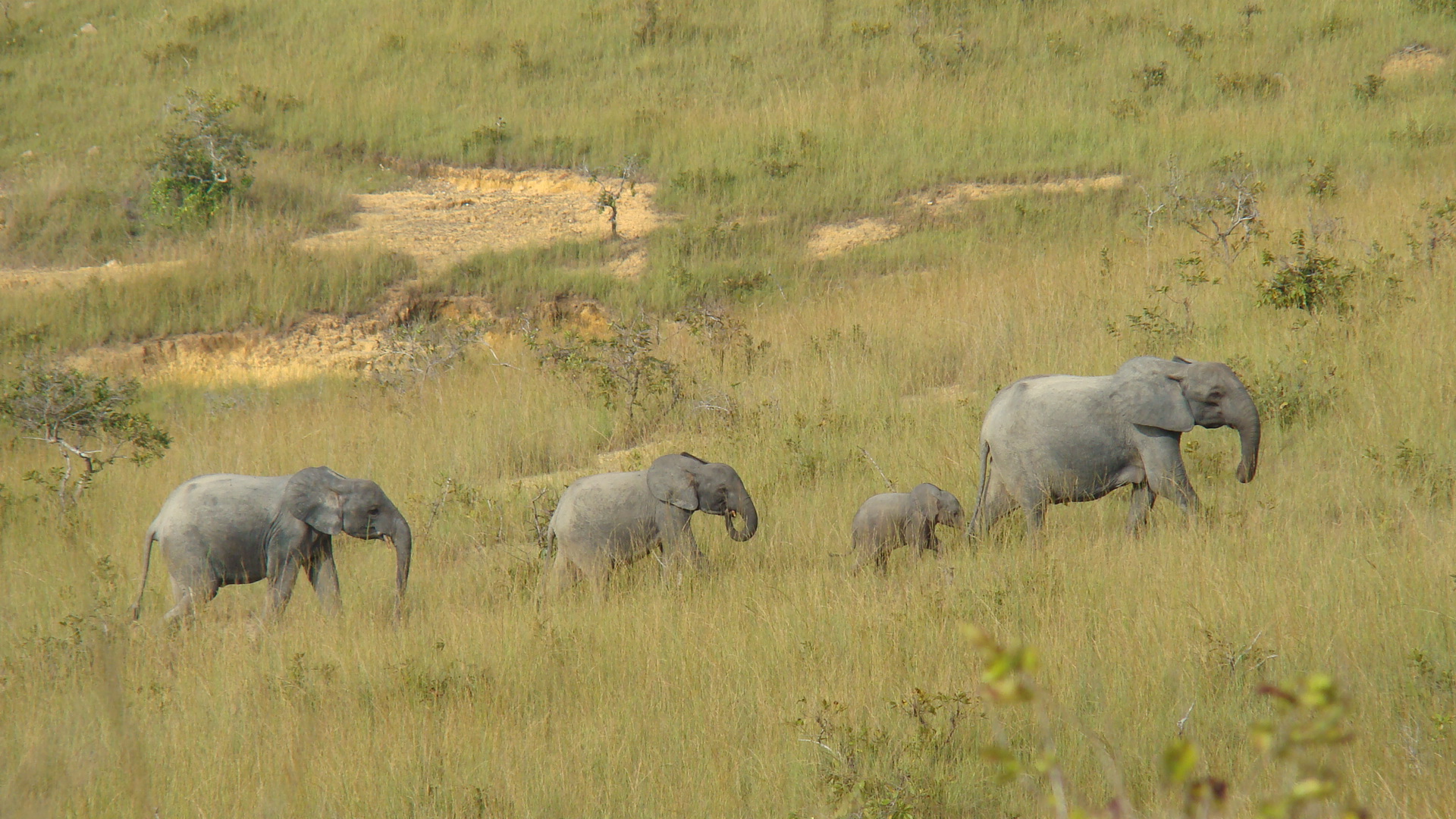
At first, all of the elephants look similar, but once you start watching them, you will start to notice individual differences between them. The first elephant identification projects took place in Kenya, and researchers used the tears elephants get on their ears to identify individuals. Savanna elephants live in drier habitats with more thorny vegetation and therefore have prominent ear tears. Forest elephants tend to have far fewer ear tears than savanna elephants, and for many, no ear tears at all. Therefore, it takes a keen eye and plenty of photographs to be able to tell individuals apart. There are a series of steps that one must go through to deduce which individual is which:
- First, it is essential to identify the sex of the elephant. The easiest and most obvious cue is behavioral. If the elephant has calves around it, it is very likely a female, especially if it is the only adult in the area. Females are hardly ever seen alone, while males are almost exclusively seen alone. If the individual is seen solitarily, it is probably a male, but look at the overall body and tusk size to make sure. Males are larger and have more girth with thicker tusks.
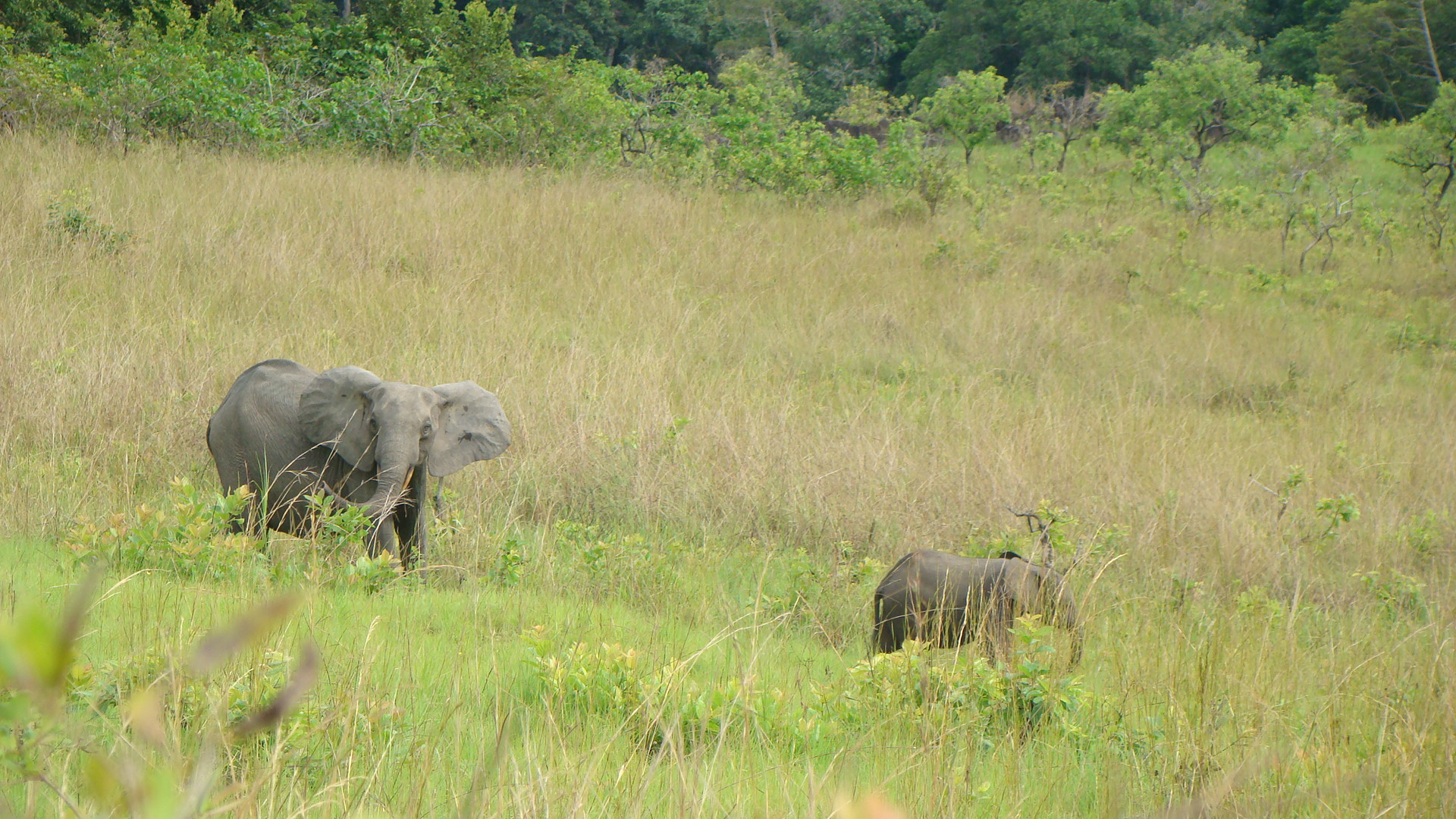
- The most obvious difference and the best place to start identifications are with the tusks. Tusks vary from short to long, thick to thin, crooked to straight, and some individuals are even tuskless. Forest elephants tend to have straighter tusks, but variation still does exist and you can find individuals with more curvy tusks similar to savanna elephants.
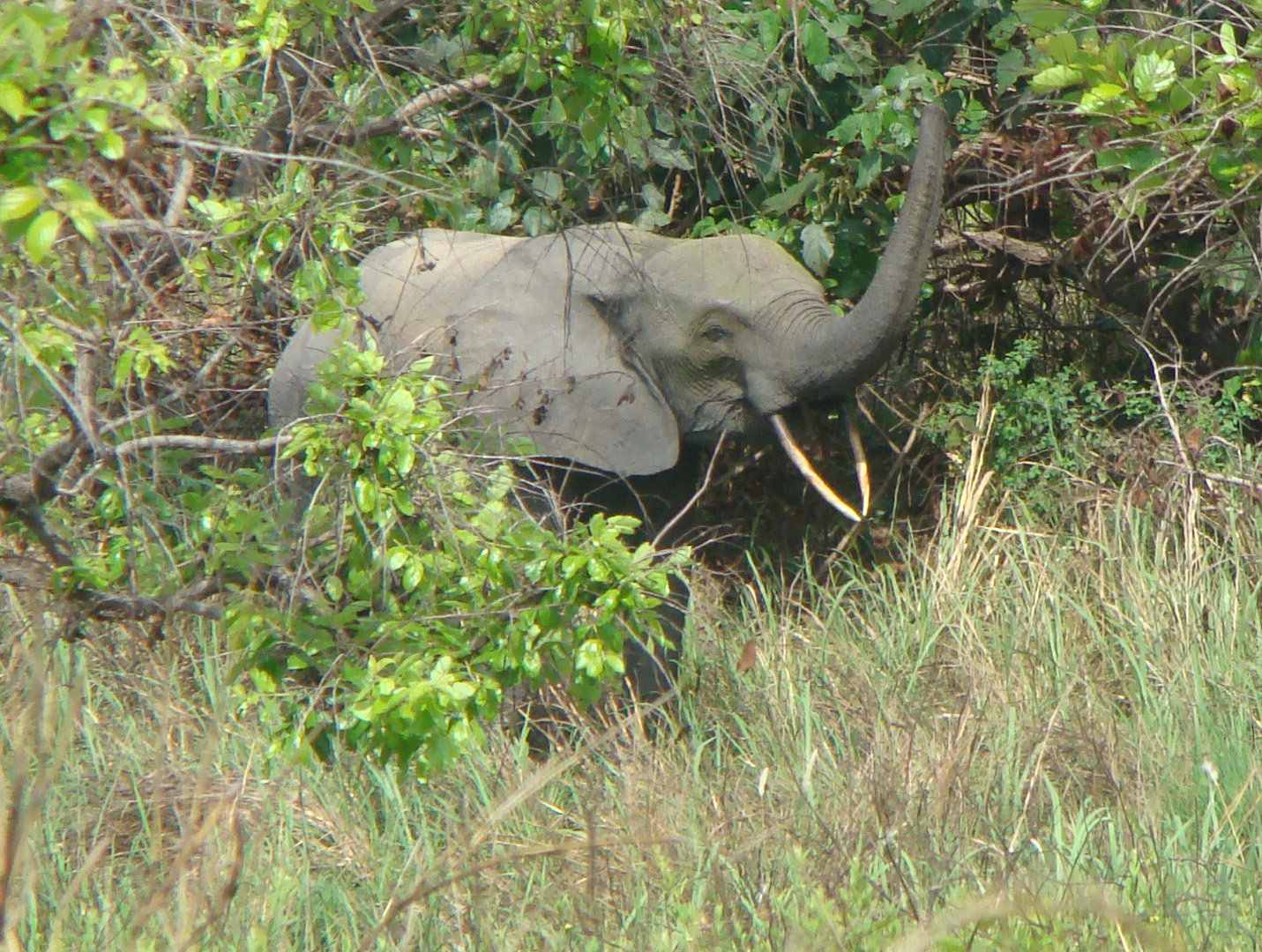
- Next is locating ear tears if they are present. Individuals may get ear tears from vegetation, but also predators (this mostly applies to calves, which can be predated on by leopards), and from fighting with each other. Ear tears can range from very small to large, and individuals can also have holes through their ear.
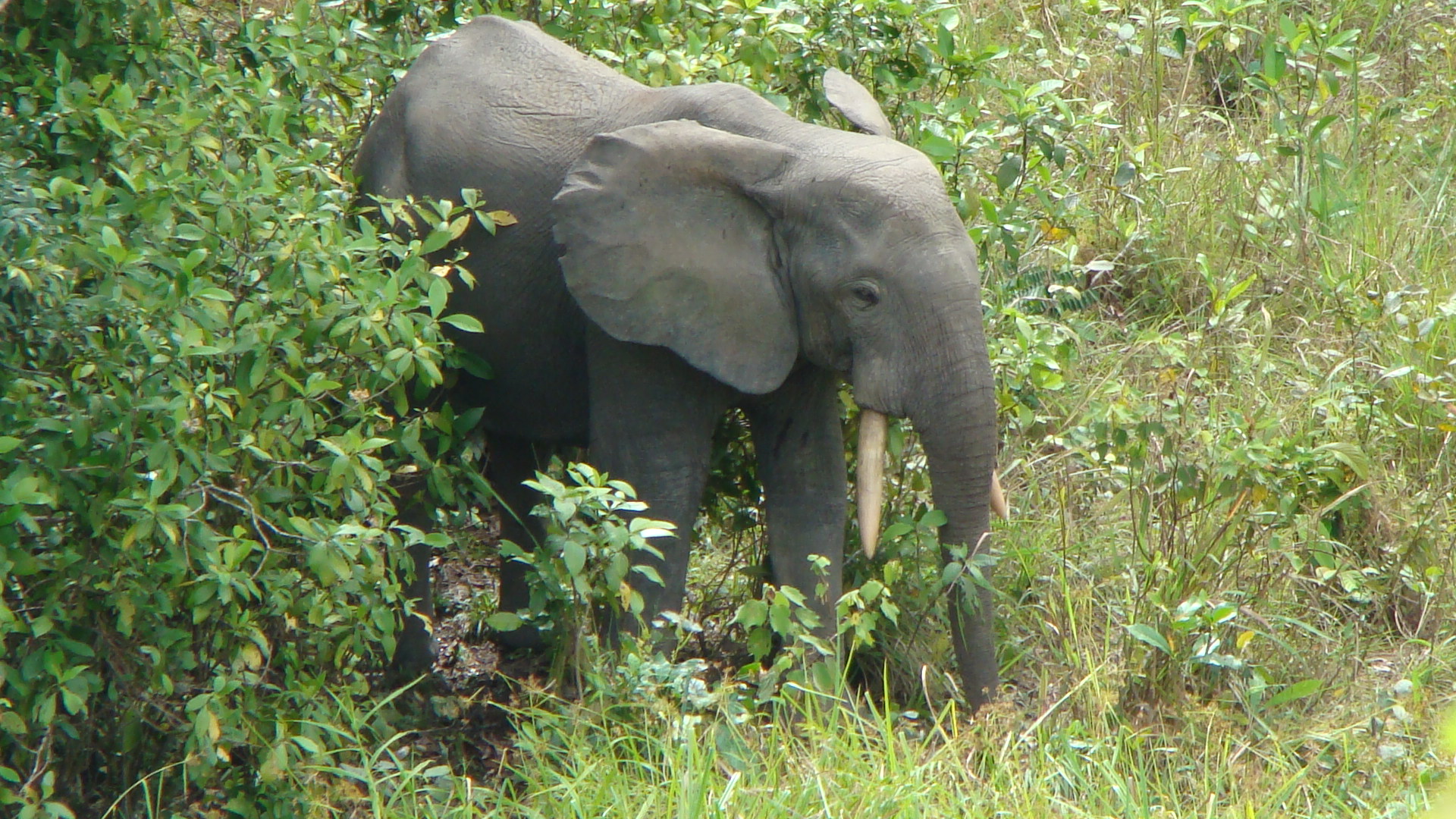
- If individuals have no ear tears, you can start comparing the ears themselves. Just like humans, elephants have differences in their bodies. Some ears are very large, small, or circular, with prominent to non-existent ear lobes. You can also look at the vein patterns on their ears to help. This requires good photographs and light, and also depends on the elephant. Some individuals have prominent ear vein patterns that can be seen in almost any light and from a far distance.
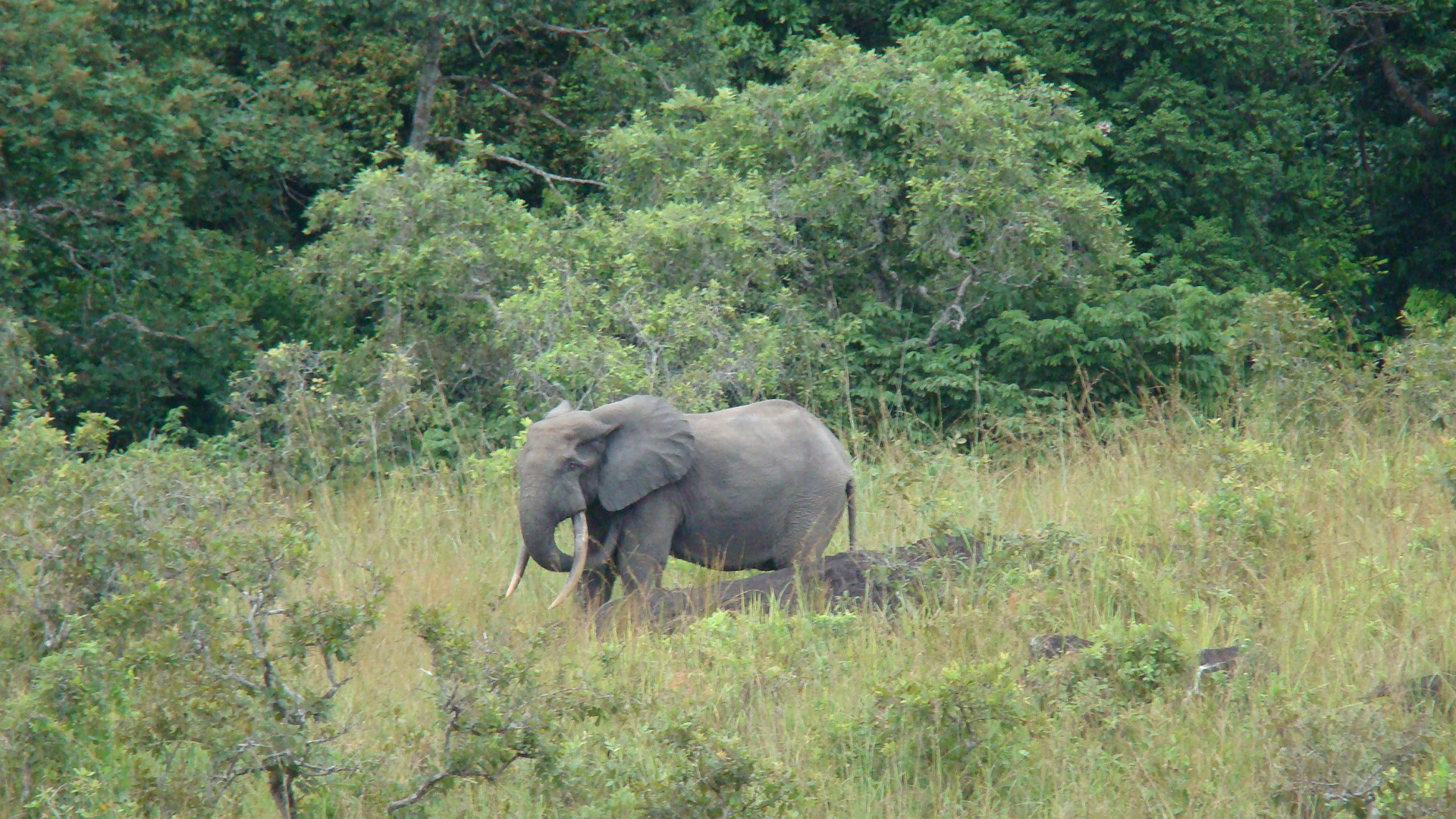
- Finally tailbrushes can be used to help separate similar-looking individuals. Individuals will have a varying amount of hair on their tailbrush from sparse to full. Some individual lack a tailbrush completely and there are even individuals in the population that have had their tail damaged or cut-off.
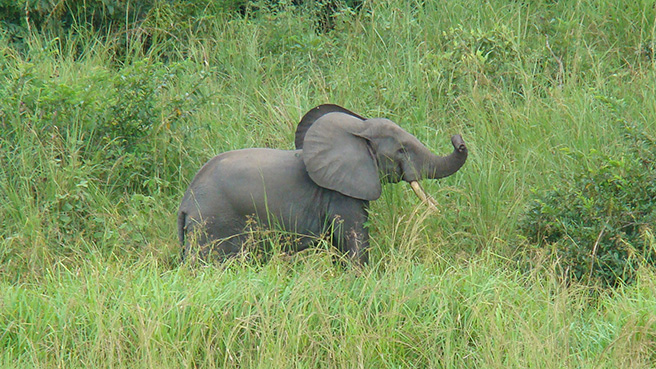
Each unique individual is entered into database program called Portfolio (by Extensis), which is actually used by art galleries to sort paintings, sculptures, and other artwork. The reason why it works so well for animals is because it provides a photo for each individual and allows you to input a code that can be used to sort individuals by their characteristics. For example, an elephant coded “FEHLETXRECGTL2F5GTB” would be female (FE), have a high tear in its left ear (HLET), no tear in its right ear (XREC, right ear “clean”), have a longer right tusk than left tusk (GTL, right tusk longer) with a left tusk in the range of 11-20 cm (2F) and a right tusk in the range of 41-50 cm (5G), and a thin tailbrush (TB). These codes allow you to search photos of individuals quickly for certain characteristics. Since 1999, 177 unique adult females and 53 males have been identified in the park.
Studying forest elephants, as in any elephant species takes time. Elephants are long-lived animals (about 60 years) and even studying them for years can only be a snapshot into their lives. Because of the nature of bai and savanna clearing observations, you can’t choose who you study, and you may only see an individual elephant once, and therefore we are still limited on the data collected. Therefore, long-term studies, and complementary, but different approaches, such as genetics and satellite telemetry, are needed to more fully understand this elusive species.
Want to see the results of my study? Check out this blog post.
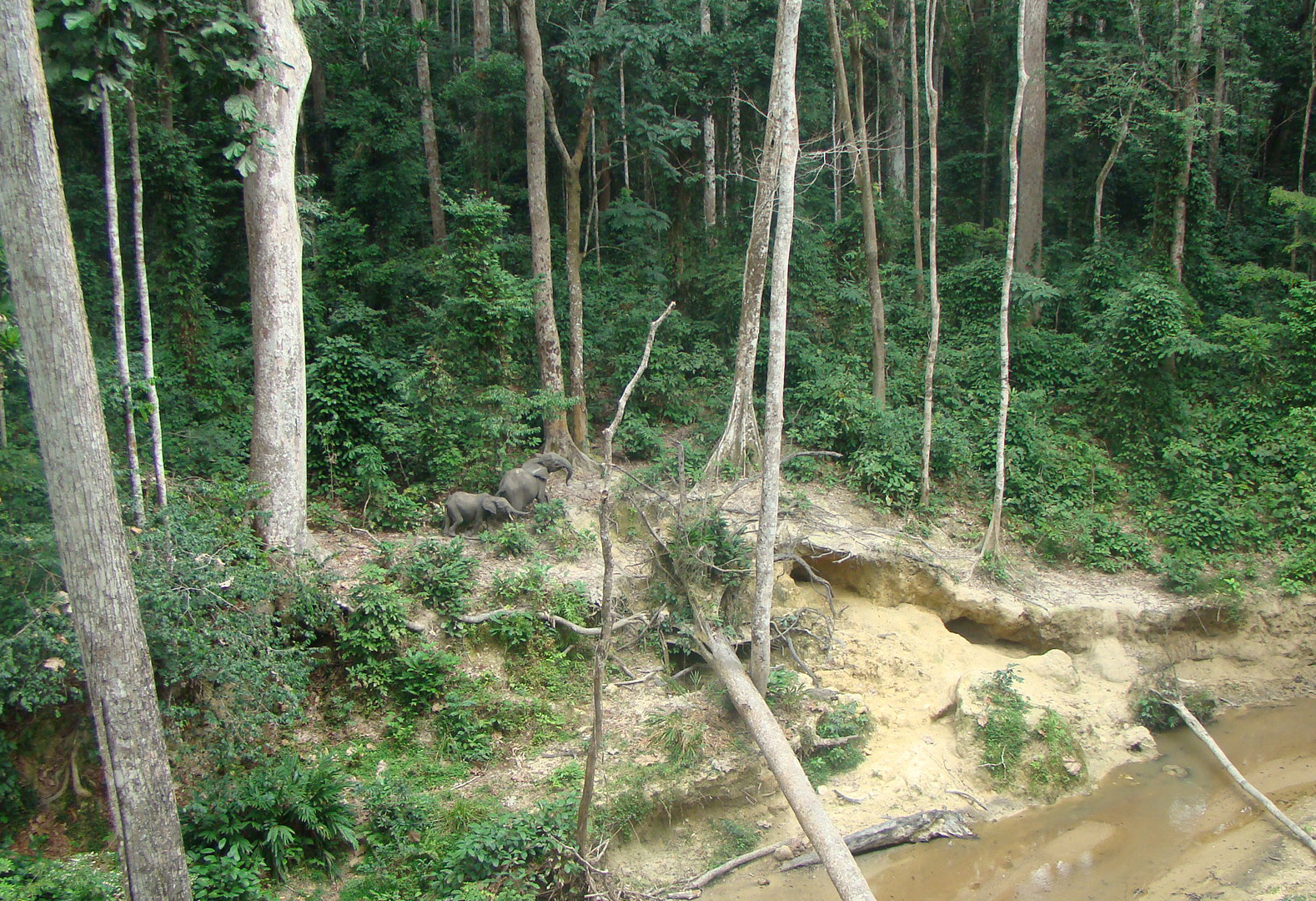
*This blog was originally posted on the African Wildlife Foundation.
SaveSave
SaveSaveSaveSaveSaveSave
SaveSaveSaveSave
SaveSave
SaveSaveSaveSave
SaveSaveSaveSave
SaveSave
SaveSave
SaveSaveSaveSave
SaveSave
SaveSave
SaveSave
SaveSave
SaveSave
SaveSave
SaveSave
Love this post? Share it with friends!

